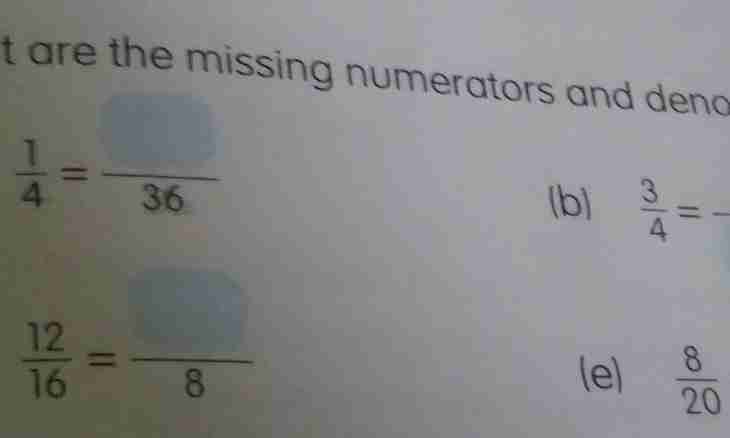The main feature of human mind is the ability to abstract thinking. One of the highest forms of abstraction in the human world is the number. Mark out several categories of the numbers differing with properties. The whole and real numbers are the most habitual and often used in everyday life. As a rule, numbers register in a decimal numeral system. Real numbers are designated by decimal fractions. One of shortcomings of record of fractional numbers in the form of decimal fractions is their limited accuracy. When accuracy is especially important, numbers write down in the form of fractions (couple numerator denominator). In some cases fractions are very convenient, but arithmetic operations with them are more difficult, than with decimal numbers. For example, to subtract fraction with different denominators, it is necessary to make several mathematical operations.
It is required to you
- The calculator or the sheet of paper with the handle.
Instruction
1. Lead fractions to one denominator. Multiply numerator and a denominator of the first fraction by a denominator of the second. Multiply numerator and a denominator of the second fraction by a denominator of the first. For example, if initial fractions are equal 6/7 and 5/11, then the fractions reduced to a common denominator will be equal to 66/77 and 35/77. In this case the numerator and a denominator of the first fraction were multiplied by number 11, and numerator and a denominator of the second fraction - by number 7.
2. Make subtraction of fractions. Subtract numerator of the second fraction from numerator of the first fraction. Write down the received value as numerator of the resulting fraction. As a denominator of result substitute the common denominator received on the previous step. So, at subtraction from fraction 66/77 values of fraction 35/77, the result 31/77 will turn out (the numerator 35 was subtracted from numerator 66, and the denominator is left former).
3. Make reduction of fraction result if it is necessary. Pick up the greatest common divisor, other than 1 for numerator and a denominator of the resulting fraction. Divide into it numerator and a denominator. Write down new values as numerator and a denominator of total fraction. The greatest common divisor, excellent from 1 can not exist. In this case leave initial fraction as result.

